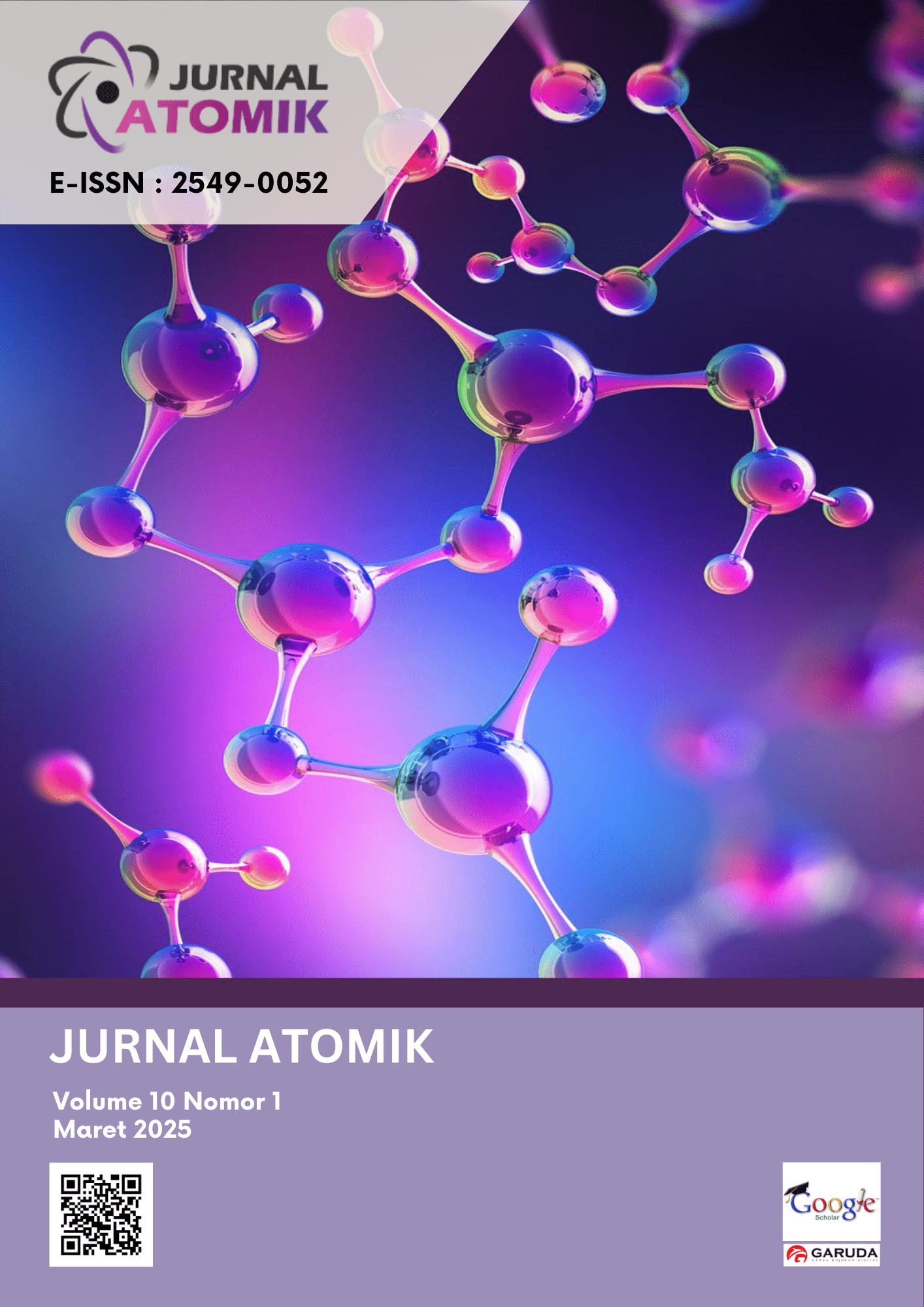ADSORPSI ZAT WARNA DIREK HITAM MENGGUNAKAN ARANG AKTIF DARI MAHKOTA NANAS (Ananas comosus (L) Merr) TERMODIFIKASI KITOSAN
Abstract
Consumption of pineapple fruit (Ananas comosus (L) Merr) results in solid waste of about 45-65%, especially the pineapple crown. On the other hand, the textile industry uses dyes such as recolors that can cause pollution in the aquatic environment. This study aims to use activated charcoal from chitosan-modified pineapple crown as an adsorbent for direct dyes. The steps taken are characterizing activated charcoal, chitosan and chitosan-modified activated charcoal using Fourier Transform Infrared (FT-IR) and Scanning Electron Microscopy (SEM), optimizing with variations in mass, contact time and pH, and determining the maximum adsorption capacity. Preparation of pineapple crown activated charcoal carbonated at 400oC for 1 hour. Activated using 2% NaOH and then modified with chitosan. The chitosan-modified pineapple crown activated charcoal was used to adsorb the dye direct black and analyzed using a UV-Vis spectrophotometer. The results of FT-IR characterization of pineapple crown activated charcoal, chitosan and chitosan-modified pineapple crown activated charcoal indicated the presence of O-H, C-H (stretching), C=O and C-H (bending) groups, and in chitosan and chitosan-modified activated charcoal also indicated the appearance of overlapping N-H (amine), C-N (amide) and C-O-C groups. The results of SEM characterization of pineapple crown activated charcoal show that the surface has a smooth texture, chitosan has a rough and irregular texture surface and chitosan-modified pineapple crown activated charcoal has small clumps of various sizes and shapes. The results of the optimum conditions of adsorption of chitosan-modified pineapple crown activated charcoal on black rec dye occurred at a mass of 0.25 grams, contact time for 20 minutes and pH 7 with a maximum adsorption capacity of 11,6472 mg/g following the Langmuir isotherm.






